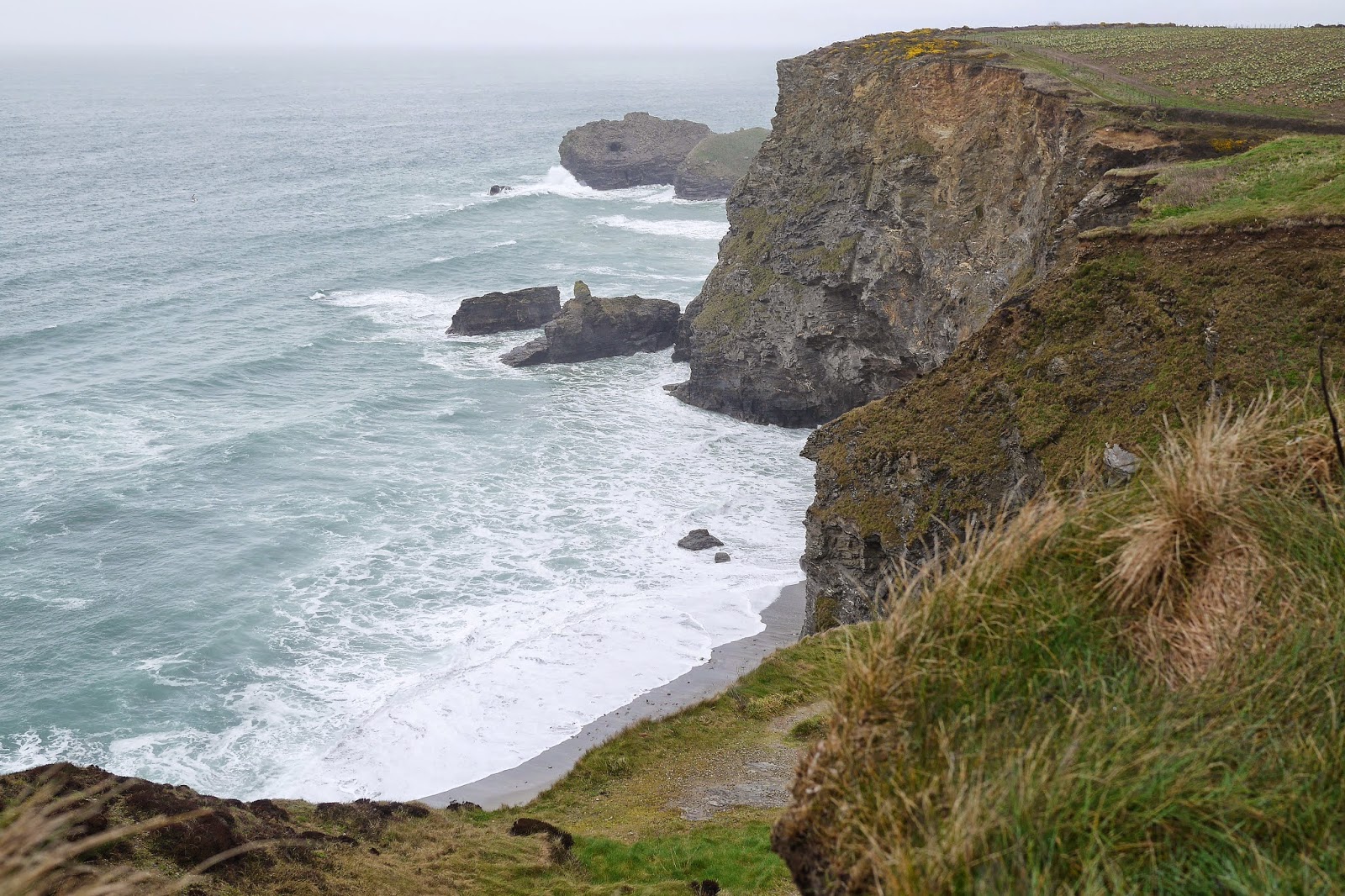The ruins of Cowdray
Today a "town and country" walk starting in Midhurst with my friend Merv. We parked in North St on the northern edge of the town and headed across the main road, past the former Grammar School, to the new South Downs Visitor Centre where we were delighted to find the excellent Town Trail leaflet. I immediately went just a little further up North St to photograph Ognell's Almshouses. The twin plaques reveal that they were erected in 1578 and rebuilt in 1840.
We made a loop around Lambert's Lane a rejoined North Street nearer the town centre, noticing some fine Georgian buildings such as the Clock House.
Some apparently Georgian buildings were in fact medieval ones which had been refronted, sometimes quite blatently. We saw one with a Georgian facade on the main street and half-timbering along the side.
A bit further on we saw this wonderful art deco shop front. I couldn't take the whole of it because a large white van pulled up as we were approaching.
We walked along the charming Duck Lane to find the other, unnamed, Almshouses in Bepton Road. They were originally 16th century, but were rebuilt in 1832.
Turning now into West Street, we enjoyed a lovely street scene with timber-clad and timber-framed houses.
On the right a mysterious plaque announced that "In 1811 The Commandery House of the Knights of St John stood here". We collected a leaflet about this is the Midhurst Museum, of which more in a moment. Apparently, the Knights of the Hospital of St John the Baptist at Jerusalem, to give them their full name, held property in Midhurst and had a chapel there. The Knights were suppressed by Henry VIII in 1540 and their lands were seized, the chapel later being demolished. The plaque and the doorway in which is located, were erected in 1811 by John Seymour, local antiquarian, but there is apparently no evidence of the existence of a Commandery.
At the end of West St we turned right into South St and looked back on a lovely view with the Spread Eagel Hotel on the left. The tower of St Mary Magdalen and St Denys can be seen to the right. It is of 13th century origin but has been subject to "too much restoration" (Pevsner). It is certainly rather a jumble of disparate elements.
The Market Square stands in front of the church and on the right is the Old Market Hall dating back to 1571. "Indifferent" says Pevsner and it is not hard to agree.
We followed Church Hill into Knockhundred Row, admiring a mixture of half-timbered and Georgian buildings. The town Museum already mentioned is in Knockhundred Market and is a remarkably small one: a single room 8ft 6in square. A very helpful volunteer explained that the collection changes every week.
We were now nearly at the end of our town walk and I must just mention one other impression: we saw several houses with their woodwork painted a rather virulent shade of dark yellow and we spent some time trying to conjure explanations for this. Maybe somebody had bought too much and sold it off cheap to his friends? The house in the background on the right above is an example.
Now up Sheep Lane past St Ann's, the largest of the many Georgian houses and along a narrow lane to suddenly emerge in the country, at the bottom of St Ann's Hill.
This quiet wooded hill is now all that remains of the Norman castle built here not long after the Conquest. We walked round it and then down to follow a path by the River Rother which soon led us to the magnificent ruins of Cowdray. This view taken on an angle gives more a sense of the large scale of the house and a glimpse of the ruins of the chapel.
The house was started in 1492 and bought by Sir William FitzWilliam, later Earl of Southampton, in 1537. It was he who added the magnificent gatehouse. His half-brother, Sir Anthony Browne, took over in 1542 and made further additions. The house was sadly destroyed by fire in 1793. Pevsner adds that eight days later the last of the family was killed trying to shoot the Rhine Falls; this fulfilled a curse (Pevsner does not say by whom or why).
We followed a wide path to nearby Easebourne, once the site of an important Priory, now a house attached to the church. "A picturesque ramble" says Pevsner.
We were soon confronted by more dark yellow woodwork. This building is the (Cowdray) Estate Office and it finally dawned on us that the ubiquitous dark yellow is the Cowdray colour.
After a very good pub lunch we headed on through the village and turned right to walk through teh outskirts of Cowdray Park. After passing Vining Farm, there was a pleasing view south towards the South Downs.
Soon after this there was great excitement as we saw our first butterfly of the year, a Comma.
This was quickly followed by a Small Heath as we walked through classic country house parkland - landscaped, inevitably, by Capability Brown. Then across the golf course, the A272 road and beside the massive Polo field to return to Easebourne and thence past Cowdray again and back to the car park.
Conditions: sunny, but very windy.
Distance: about 6.5 miles.
Map: Explorer 133 (Haslemere & Petersfield).
Rating: four stars. A delightful small town with a wonderful ruined castle nearby.


























































